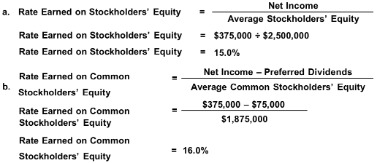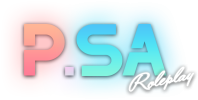
Xero also includes accounting apps for both iOS and Android devices, with dozens of enhancements and updates made in the last 18 months. If you want an application that offers easy integration with hundreds of apps, Xero is for you. It integrates with more than 700 third-party applications in a variety of categories, including payroll, point-of-sale, practice management, time-tracking, CRM, and e-commerce. Generally speaking, the software discussed here is easy to install and set up. You can spend a few minutes creating a basic small business accounting system.
Xero: Accounting Software Born In The Cloud
- At its core, it offers dynamic invoicing capabilities allowing businesses to generate bespoke online invoices tailored to their specific requirements.
- Xero also offers enhanced invoicing, so you can create a more professional invoice.
- Your CEO, like the CFO, will be concerned with the dollars and cents of this procurement effort.
- Our editorial team independently evaluates products based on thousands of hours of research.
Most accounting software applications allow you to export your reports to Excel, where you can customize them if you wish; the difference being that you’re starting with the correct numbers. If you’ve been holding out on moving to accounting software, Kashoo may be a great first step, providing you with solid accounting features at a price that any small business can the monetary unit principle afford. Kashoo does offer integration with SurePayroll for those that need to pay employees, though you may want to consider a more robust application if you need to pay more than a few employees. Kashoo offers a streamlined user interface, making it easy to navigate, even for less tech-savvy users. Ideal for sole proprietors and freelancers, Sage Business Cloud Accounting also includes solid inventory management, making it a good option for retailers, particularly online sellers.
Bank Feed
Ideal for sole proprietors and freelancers, with its robust inventory management module, OneUp is a great option for retail businesses. When it comes to accounting what’s the difference between direct vs. indirect costs software for small businesses, you’re spoiled for choice. All those options can make your head spin if you’re not sure what you’re looking for.
OneUp is also suitable for growing businesses, with pricing based solely on number of users rather than features, with the Self plan, for a single user, including the same features as the Unlimited plan. A good fit for small and growing businesses, AccountEdge Pro is an on-premise application that also offers the convenience of remote access, taking you easily through the entire accounting cycle. A hosted version of AccountEdge Pro is also available for those that need anytime/anywhere access to the application.
Sage Business Cloud Accounting is a powerful and straightforward cloud-based accounting solution designed to help freelancers and small business owners with accounting, expense management, and tax compliance. True SMB accounting software is distinguished by having better tools for financial data management, reporting, analytics, tax preparation, etc. SMB accounting tools have become increasingly affordable in recent years, making them the preferred choice for most businesses.
You can filter transactions, match receipts with expenses on the go, customize invoices, make payments and view trends and insights about your business. Plus, you can get automatic accounting reports, receive guided workflows and set it up in five minutes. Businesses seeking a highly adaptable accounting solution that offers a precise and detailed overview of their finances should consider ZarMoney. In addition, businesses that are likely to increase their accounting software user account in time should consider ZarMoney’s Small Business and Enterprise plans. Some notable features offered by AccountEdge include its custom reporting, data security, invoicing and project time tracking tools. However, the dashboard offers some convenience features that make the user experience intuitive.

If you don’t have a lot of accounting knowledge, the best business accounting software should be powerful yet easy to use—FreshBooks might be the right choice. Increasingly complex automation of repetitive or tedious accounting tasks has set some accounting software platforms apart from the crowd — and business owners want more of it. Expect to see increasingly sophisticated approaches to automation that take more of the burden off how to run a committee with pictures business owners in the coming years, freeing them and their staff up for more pressing tasks.
You can create a quote and then convert it into an invoice when the customer is ready to buy. You can convert the quote and bill by a percentage of the original quote or a set quantity, rate or amount. And, you can attach documents to the invoice when needed, including warranties, contracts and return policies. AccountEdge’s invoicing features allow you to send the invoice by email or print an invoice and you can set up recurring transactions after you’ve created your first transaction invoice. One particularly notable feature set within AccountEdge is its data management and report customization features.
What is the best accounting software for small business?
Many complain that the software needs more bank feed integration options and customization options. To add to the software’s ease of use, templates make setting up automations intuitive. To set up automations, templates include simple forms to create conditions for actions to automatically occur (such as if a received amount is greater than a chosen amount) and what actions should be performed as a result. Accounting software sales reps and marketing websites can tell you all about the benefits their software provides, but where’s the proof?
Some software tools provide a portal where your customers can pay online by credit card or through their bank account, rather than having to mail you a check. Not only does this make your business look more professional, but it also keeps your customers happier, providing a stronger business relationship. As the most commonly used feature of any accounting solution, electronic management and tracking of A/P and A/R is included in every system with varying levels of automation. The accounts payable features track payments to vendors, suppliers, and other financial outlays to ensure your payments are prompt. The accounts receivable feature includes billing, invoicing, and collections to help you track missing payments.
